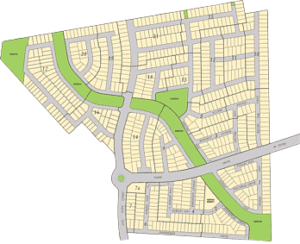The important key steps to follow in purchasing land includes; land identification, search, sale agreement, transfer, stamping and the registration of the transfer.
Land Identification
The prospective buyer identifies a piece of land that meets their criteria including size, location, soil type among other factors. Are you looking for a land to buy? click here to identify a land of your choice.
Search at the lands registry
- Carry out an official search at the county registry. The search indicates the ownership and status of the land. One needs to have a copy of the title to the land that you intend to do the search.
- You will have to fill a search application form and attach on it single copies of the title deed, ID card and PIN certificate and pay Kshs.500/- at the registry and get an official receipt.
- The search will give you the following information; The registered owner, Its size, Any encumbrances against the land, for instance cautions, caveats. It will further show the title and search numbers, date the search was done, nature of title (freehold/leasehold), approximate area in hectares, name and address of proprietor and whether a title has been issued. A title with any unresolved issues of the above is not transferrable.
- The search results must be signed and sealed by the registrar. If all is clear, then you may proceed to the next step which is writing a sale agreement.
Sale agreement
The purchaser may appoint a lawyer to represent him in the signing of the agreement. The sale agreement is prepared by the seller’s lawyer and it indicates the terms of sale including the names of the buyer and seller, price of the land, mode of payment and documents to be supplied by the seller to facilitate registration of the transfer of land to the buyer.
At this point, the buyer may be required to pay a deposit with the balance payable within 90 days after signing of the sale agreement. After the parties have signed the sale agreement, the document must then be stamped to make it legally binding.
Transfer and procurement of completion documents
- The transfer document is usually prepared by the buyer’s advocate and approved by the seller’s lawyer.
- The seller is supposed to procure the completion documents at his costs, including the: original title deed, 3 copies of transfer of land duly completed by the seller, ID Card, certificate of registration of the seller and PIN certificate, 3 passport size photos of seller (if company, photos of two of its directors) land rent clearance certificate (for leasehold
land) rates clearance certificates, and consent to transfer and valuation form duly completed by the seller. - The document should also be signed by the buyer who is also required to produce copies of his ID card, PIN certificate and passport photos.
Stamping the transfer
- The buyer then applies for the valuation of the land by the government valuer using valuation form duly completed by the seller. Lands office will use these documents to determine stamp duty payable.
- The stamp duty should be paid to the commissioner of domestic taxes usually through the National Bank or any other appointed bank.
- Once the payment is done, the buyer should lodge the documents at the lands office for stamping with duty.
- Thereafter, the buyer should book the following documents for registration: Title deed; land rent and rates clearance certificates, valuation report, consent to transfer, stamp duty declaration and pay-in-slip.
Registration of the transfer (final of the steps to follow in purchasing land)
This is the last process of the land purchase and it involves the registration of the transfer in favor of the buyer.
“Enjoyed this article? Show your support by buying us a coffee ☕”



